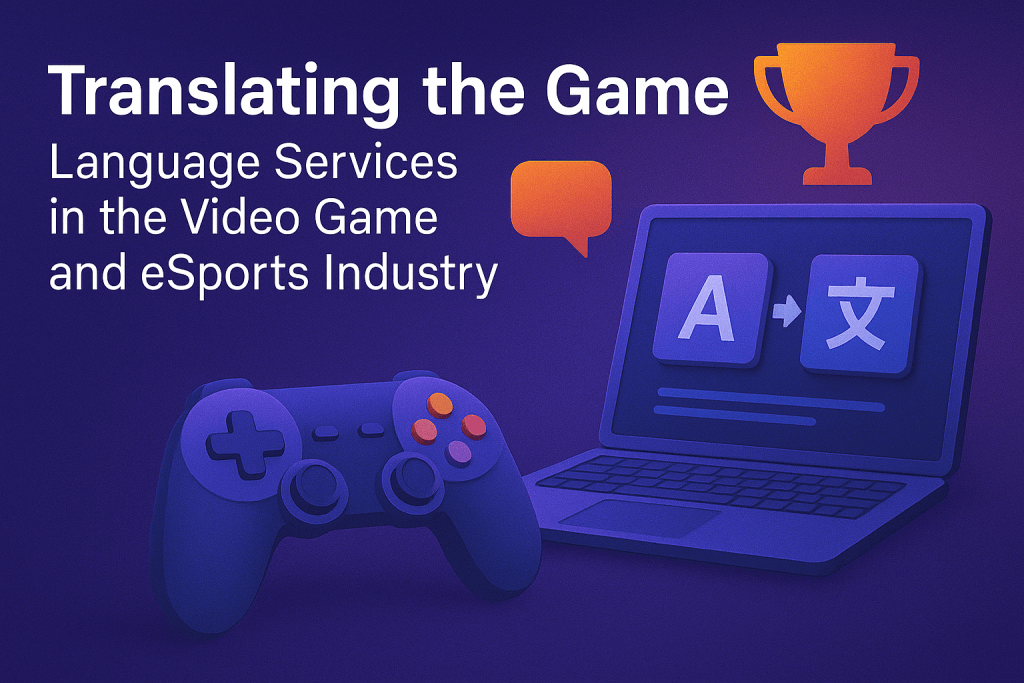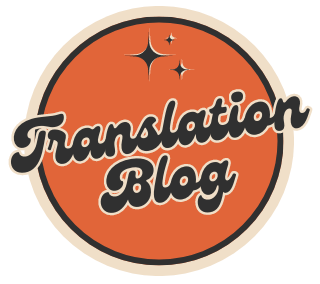As the video game and eSports industries continue their rapid global expansion, language services have emerged as critical components of their success. Localization, cultural adaptation, and high-quality translation are no longer optional—they are vital for engaging players in diverse markets and building brand loyalty across borders. From indie developers to major studios and global tournament organizers, the demand for skilled language professionals is surging.
This article explores how translation services shape the gaming experience, how the industry’s needs differ from traditional sectors, and why linguists must adapt to the fast-paced, immersive world of interactive entertainment.

The Unique Nature of Video Game Localization
Unlike traditional content such as manuals or legal documents, video games are inherently interactive and immersive. Players are not just reading text—they are experiencing a world. Translators must consider character dialogue, in-game instructions, UI elements, cultural references, and more. The challenge is to preserve the spirit, humor, and gameplay clarity of the original while adapting it to another language and culture.
Additionally, games often include slang, fantasy terms, and fictional worlds. Translators must make creative decisions while maintaining consistency and ensuring players in all regions experience the game as intended. This calls for a hybrid skill set—linguistic fluency, creative writing, and familiarity with gaming culture.
Why eSports and Gaming Demand Specialized Language Services
The competitive gaming (eSports) sector presents its own translation challenges. With millions of fans tuning in to live-streamed tournaments, commentaries, and interviews, the need for real-time and accurate interpretation is greater than ever. Mistranslations can lead to confusion, damage brand reputation, or misrepresent the tone of competitive play.
Games that thrive internationally often owe part of their success to their local adaptations. A compelling example is slottimonsteri.io, a gaming platform that has gained popularity by offering a localized experience for its Finnish-speaking audience. This kind of tailored content demonstrates how culturally aware translation directly contributes to user engagement and retention in specific regions.
Key Components of Game Localization
To successfully localize a game or eSports content, translators and localization teams must address multiple components:
- Text Localization: Dialogue, tutorials, in-game prompts, item descriptions.
- Audio Translation: Voiceovers, character lines, narration.
- Subtitling & Captioning: For cutscenes, interviews, and livestreams.
- Graphics & UI: Adapting images, symbols, and layouts to fit target language norms.
- Marketing and PR Materials: Trailers, press releases, social media content.
These elements often require coordination across departments—designers, developers, writers, and voice actors. Timing is also critical, as games frequently have simultaneous global releases.
Balancing Accuracy with Player Experience
One of the central tensions in game localization is balancing literal accuracy with entertainment value. Direct translations may fail to convey a joke or character trait effectively. Transcreators—specialist translators who adapt creative content—are often brought in to bridge this gap. They rewrite sections to evoke the same feelings in the target audience while staying true to the original game’s spirit.
For example, a pun in English may not make sense in Japanese. A literal translation could confuse players or disrupt immersion. The transcreator’s job is to replace it with an equivalent joke or cultural reference that feels natural to the target audience.
Common Pitfalls in Game Translation
Despite growing demand, game localization still faces frequent challenges:
- Lack of Context: Translators often work with strings of text without knowing where they appear in the game. This can lead to mismatches in tone or gender references.
- Space Constraints: UI limitations may require translators to shorten text drastically without losing meaning.
- Timing Restrictions: Subtitles or voice lines must match animations or lip-syncing.
- Cultural Mismatches: Jokes, gestures, or imagery that are acceptable in one culture may offend or confuse in another.
To overcome these issues, developers are increasingly involving translation teams earlier in the development process and providing more contextual information to ensure high-quality results.
Tools and Technologies in Game Localization
Modern translators working in the gaming sector rely on several tools to manage volume and maintain quality:
| Tool/Technology | Purpose |
|---|---|
| CAT Tools (e.g., MemoQ, SDL Trados) | Reuse common phrases and maintain consistency |
| Localization Management Platforms (e.g., Smartling, Lokalise) | Streamline collaboration between teams |
| Termbases & Glossaries | Maintain accuracy for game-specific vocabulary |
| Subtitling Tools | Sync translations with video/audio timing |
| QA Tools | Spot errors in grammar, spacing, formatting |
While automation and AI can assist with certain elements, human oversight remains essential—especially for narrative-heavy or humor-driven games.
The Translator’s Role in Shaping Global Gaming Culture
Beyond technical skills, translators in the gaming and eSports industries play a vital cultural role. They serve as mediators between game developers and global players, shaping how a story is received and how characters are perceived. When done well, localization can turn a regional game into an international hit.
Moreover, translators influence gaming communities by localizing forums, patch notes, eSports commentary, and fan content. These communities thrive when fans feel acknowledged and included, which reinforces the need for culturally relevant communication.
Industry Growth and Opportunities for Language Professionals
The global gaming industry is expected to exceed $300 billion in revenue by 2026, with Asia, Europe, and Latin America emerging as significant markets. This expansion translates into more opportunities for multilingual content specialists, particularly those who understand gaming dynamics.
Language professionals with a passion for gaming can find roles in:
- Game studios (in-house or freelance)
- eSports broadcasters and event organizers
- Localization agencies specializing in entertainment
- Gaming news and review platforms
- Indie game projects with global ambitions
As real-time localization becomes more common—especially in streaming and multiplayer environments—the demand for agile and culturally fluent translators will only grow.
The integration of skilled language professionals into the game development pipeline isn’t just good business—it’s what allows games to resonate across languages, cultures, and continents.

